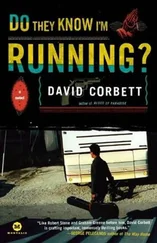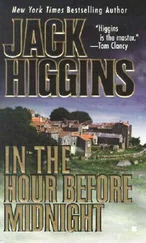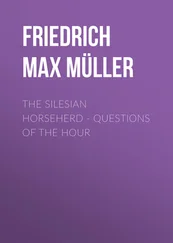Suddenly Imogen returns with a radiant smile, leaning toward him with her hands on her chair.
— I had a revelation in the washroom.
— Really?
— We’ll go to the Alps. Switzerland, perhaps, because they’re neutral. We’ll hole up in a chalet in one of those steep valleys that hasn’t any roads and is reachable only on foot. Surely there are such places?
Ashley feels a flush of warmth. He worries it will show on his face and he takes a drag of his cigarette.
— Certainly.
Imogen beams. — No one shall ever find us.
— That was the revelation?
— One of them.
— What was the other?
— I’ve lost my latchkey. I shan’t be able to get inside my own house.
— Lost it?
Imogen pulls out her chair and sits down.
— Really, she remarks, it isn’t so shocking as that. The wonder is that I didn’t lose it sooner.
— Isn’t anyone home?
She shakes her head. — That’s the punch line. They all went down to Sussex today, even the housekeeper. She shan’t return till morning.
They search among Imogen’s possessions. Ashley scans the patterned carpet around the table, nearly bending to all fours. A few of the waitstaff assist in the search, circling the table without enthusiasm. They do not find the key.
— I might have lost it in the park, Imogen says.
Ashley laughs.
— You don’t mean — we’d never find it there now.
— We might.

An airport security guard taps my shoulder to wake me. I sit up in my sleeping bag. It’s 5:21 a.m. and the check-in line has snaked around my encampment.
I sleep through my whole flight and on the bus from Skavsta Airport into Stockholm central station. On the train to Uppsala I take out my printouts to review, but I spend the short ride looking out the window, wishing I could see more of Sweden.
The Uppsala Landsarkivet is in a tall brick building, a twenty-minute walk from the train station between the university’s botanical gardens and hospital. The young woman at the reception looks up my appointment, addressing me in fluent English.
— Campbell, she says. Here it is. I’ll bring the material into the reading room. Put your bag in the lockers and take anything you need in the clear carrier bags.
— Can I bring a camera?
— Yes, but please no flash.
A few minutes later the woman brings three volumes to my table along with a pair of cotton archival gloves. The books are all leather-bound, a few hundred pages per volume. The spines read Församlingsbok— LEKSANDS Församling. I start with these registers, a kind of census recorded by the parish. The sisters would have been in Sweden during the winter of 1916–17, so I’ve ordered two volumes, 1910–1916 and 1917–1931. The sloped handwriting is sharp and fairly clear, but the books are still almost impossible to decipher. The names are entered in numbered horizontal rows, but there are eighteen vertical columns whose categories are all printed in tiny Swedish. In some cases a whole block of the names is crossed out and I can’t figure out why. Finally I get the young woman to help me.
— What does this word torp mean?
— It’s like a farm. The records are listed by area. So these people are all living in the same farm, you see? Here is the person’s job, the birth date, the birth parish, the place they moved from—
The woman helps me for a few minutes, but another patron has a question and she moves on. I decide to ignore the columns. Unless I find the right family it makes no difference what they mean. I look through through the end of the 1910–1916 book and the beginning of the 1917 book. Nothing, unless the sisters’ names and dates were entered completely wrong. There are several women with the name Charlotta or Eleanora — Gunborg Eleanora, Aldy Erika Charlotta, Anna Eleanora — but all these seem to be middle names, and in any case they are listed among households filled with completely unfamiliar names. There’s no Imogen anywhere.
I go to the bathroom and splash water on my face, looking at myself in the mirror. It could still turn out all right. Maybe they weren’t around when the parish was surveyed in 1917. Or maybe they just didn’t show up to be counted. I go back into the reading room and start the other book, the ledger of birth records. Födelse-och Dopbok för Leksands församling. The entries run from 1906 to 1920. They’re largely chronological and easier to follow than the parish registers. I scan down the names with my gloved finger.
April 20 Anders Johan. April 14 Tora Margareta. Maj 13 Lars Ove. Maj 17 Charlotte Vivian. Maj 30 Sven August.
I pull my finger back.
Maj 17 Charlotte Vivian. Fader: Charles Francis Grafton 87 9/ 10Moder: Eleanor Soames Andersson Grafton 91 21/ 3
I turn away, shaking my head. But when I look back it’s the same thing. I’d come nine hundred miles just to see this, the proof of how foolish I’d been. I take a photograph of the page and stare at it for a final moment. The entry has a few other columns with dashes or the number 1 in them, but I don’t bother to figure out what they mean.
A few minutes later I walk out into the afternoon sun, heading back toward the train station. It was beyond stupid. I’d stacked guesses on top of guesses because I wanted to believe in them, because I wanted to believe I could find something other people couldn’t. The answer was on that page.
Maybe it didn’t matter how clever I was. Maybe there was nothing to find, because Eleanor was the mother, and even if she wasn’t they’d all been careful enough not to leave a single piece of clear evidence behind, so that all the experts with all the time in the world wouldn’t find anything. Much less an amateur with seven weeks. I walk quickly, overtaking people on the sidewalk as I pass the red facade of Uppsala castle, the tiered garden spilling down toward the city.
— But they’d never have put Imogen’s name on anything to begin with, I whisper to myself. Even if she was the mother.
I was crazy to have believed otherwise. Prichard had warned me that the vital records had all been searched, but I’d ignored him and come here anyway. I’d been following one kind of evidence, indirect clues in letters, and I’d gone after another, the most obvious of all records. I was done with all that.
The spires of the town’s cathedral project above the treetops ahead. I’m not in a hurry anymore, so I cut through a backstreet and enter the cathedral through the transept. It’s dark and cool inside. Slowly I walk through the nave, craning my neck to look at the rib vault ceiling, the stained glass high overhead. I sit in a pew in front of a huge astronomical clock, carved of wood and painted in burgundy and royal blue. A sign explains the mechanism’s function. The clock dates from 1424.
The timepiece has two dials. The upper dial displays the twenty-four Roman numerals of the hours, the orbits of the sun and moon swinging against the gilded letters. The perpetual calendar turns on the lower dial, running for a hundred years from 1923 to 2023, the religious holidays inscribed minutely in Latin, the twelve signs of the zodiac along the outer band. I watch the circling lion carved in gold relief; the sheep with spiraling horns; the pair of fish; the long-pincered crab. At the dial’s center the figure of Saint Lawrence stands passive and eternal. The mechanism clicks on, reckoning away the centuries since its creation.
The clock strikes noon. The church’s organ plays “In Dulce Jubilo.” Between the dials, the carved figures of the magi and their servants parade around the seated virgin and child.
Читать дальше













